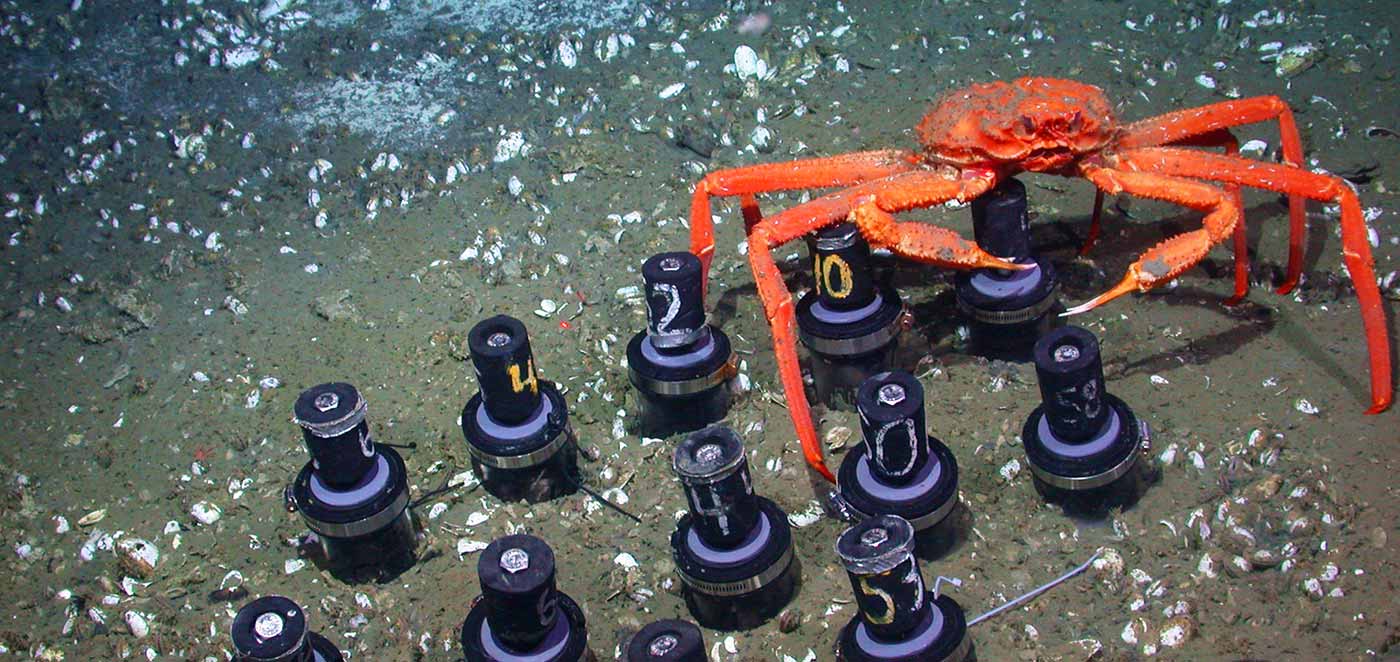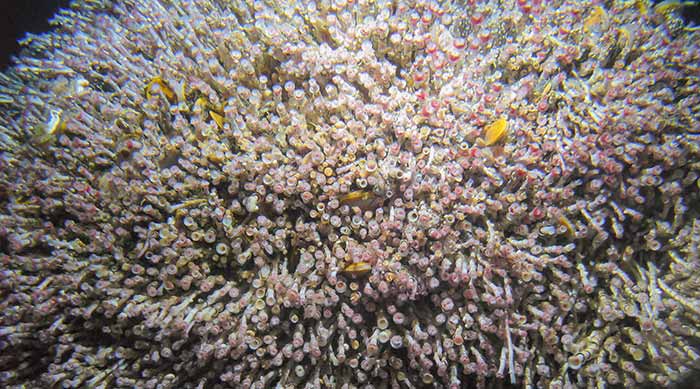UC San Diego Among Multidisciplinary Awards Providing $221M Nationally for Cutting-Edge Projects
Technology & Engineering
By:
Published Date
By:
Share This:

The deep ocean, the largest domain for life on Earth, is also its least explored environment. Humans are now encroaching more vigorously than ever into the ocean’s deep regions, exploiting the deep’s resources and placing its wealth of vibrant habitats and natural services for the planet at risk.
Lisa Levin, a biological oceanographer at Scripps Institution of Oceanography at UC San Diego, believes the vital functions provided by the deep sea—from carbon sequestration to nurturing fish stocks—are key to the health of the planet. As humans ramp up exploitation of deep-sea fish, energy, minerals, and genetic resources, a new “stewardship mentality” across countries, economic sectors, and disciplines is required, Levin says, for the future health and integrity of the deep ocean.
Levin was joined by several other experts at last weekend’s “Deep-Ocean Industrialization: A New Stewardship Frontier” symposium and news briefing held at the annual meeting of the American Association for the Advancement of Science (AAAS) in Chicago.
As the human population has more than doubled in the past 50 years, demand for food, energy, and raw materials from the sea has risen with it.
“At the same time human society has undergone tremendous changes and we rarely, if ever, think about these affecting our ocean, let alone the deep ocean,” said Levin, who has conducted research on the deep sea for more than 30 years. “But the truth is that the types of industrialization that reigned in the last century on land are now becoming a reality in the deep ocean. As we exhaust many coastal stocks, commercial fishers have turned towards deeper waters.”

Beyond marine life depletion, the deep sea also is being threatened by the search for new sources for energy and precious materials. Oil and gas exploration now routinely targets seabeds in more than a thousand meters of water depth. Demand for modern technology devices—from cell phones to hybrid car batteries—has fueled a push by the mining sector to deep waters in search of new sources of metals and other materials.
“Vast tracts of deep seabed are now being leased in order to mine nodules, crusts, sulfides, and phosphates rich in elements demanded by our advanced economy,” said Levin. She added that rising carbon dioxide emissions are exposing deep-sea ecosystems to additional stress from climate change impacts that include warmer temperatures, altered food supplies, and declining pH and oxygen levels.
“Extraction from the deep sea is a tradeoff. Is the value of what we’re extracting greater than the damage?” asks Linwood Pendleton, director of the Ocean and Coastal Policy Program at the Nicholas Institute for Environmental Policy Solutions at Duke University. “Are there ways to extract that might be more economically costly but have lower ecological impact? How can we repair the considerable damage that has already been done to the sea floor through trawling, pollution, and other practices? These are questions that we need to answer before industrial activity gets ahead of scientific understanding.”
Levin’s stewardship efforts for the deep sea go hand-in-hand with her role as director of the Center for Marine Biodiversity and Conservation at Scripps, which has been addressing stewardship challenges for the past 12 years. The center brings together social and natural scientists to address issues critical to the ocean environment, including overfishing, contamination, climate agreements, and the creation of marine reserves.
Such efforts continue a long history of stewardship for the planet born at Scripps Institution of Oceanography.
The California Cooperative Oceanic Fisheries Investigations (CalCOFI) program, as an example, is one of the world’s premier ocean observation programs. Now 64 years old, CalCOFI conducts regular cruises and sampling off the California coast to help the state manage its fisheries and living marine resources. Led by Scripps, NOAA’s Southwest Fisheries Science Center, and the California Department of Fish and Game, CalCOFI’s legacy featuring a vast observational data resource has led to a range of insights vital for fisheries, resource management, understanding climate impacts, and other aspects that enable a comprehensive understanding of the oceans and in turn well-informed policy decisions.
CalCOFI exemplifies an approach to science that is common at Scripps: the making of long-term observations and the accumulation of data over many decades. Almost as old as CalCOFI is the Keeling Curve, a measurement of atmospheric carbon dioxide levels that has taken on icon status since it began in 1958. The steady and ultraprecise measurement has been the underpinning of much modern climate change research. Charles David Keeling, the namesake creator of the measurement series, also contributed to early complementary measurements of ocean acidification in the 1980s.
Other programs at Scripps include earthquake monitoring and natural hazard early-warning systems to enhance public safety. The deep sea, however, represents a unique challenge since it represents an area of the ocean that is woefully underexplored, a fact that is prompting scientists to act with urgency before damage occurs prior to fully understanding what’s at risk.
The deep sea holds a nearly infinite amount of genetic diversity, some of which could provide novel materials or future therapeutics to treat human diseases, but if not protected, these could be disturbed or lost before we discover them.
The need to preserve deep-sea ecosystems in the face of growing industrialization of the deep ocean, Levin says, requires a new “precautionary” mode of thinking about the deep sea that promotes sustainable, ecosystem-based management across industrial sectors and governance realms.
“We need international cooperation and an entity that can develop and oversee deep-ocean stewardship,” said Levin. “We also need multiple sources of research funding that can help provide the scientific information that we need to manage the deep sea. All of this will require efforts that bridge several disciplines and engage stakeholders in these discussions.”
“It is imperative to work with industry and governance bodies to put progressive environmental regulations in place before industry becomes established, instead of after the fact,” said Cindy Lee Van Dover, director of the Duke University Marine Laboratory. “One hundred years from now, we want people to say ‘they got this right based on the science they had, they weren’t asleep at the wheel.’”
“From a legal perspective, the deep ocean is filled with contradictions. Deep sea mineral resources located beyond national boundaries are part of the ‘Common Heritage of Mankind’ under international law, but the fish and octopi that swim just above the seafloor are not,” said Kristina Gjerde, senior high seas advisor to IUCN—the International Union for Conservation of Nature. “To prevent harm we can never hope to repair, precautionary rules need to be in place to guide all human uses of the deep ocean across boundaries and across sectors.”
Other AAAS participants with Levin included Samantha Smith (Nautilus Minerals) and Bronwen Currie (National Marine Information and Research Center). The scientific symposium was sponsored by the Deep-Ocean Stewardship Initiative and the Center for Marine Biodiversity and Conservation at Scripps.
With its decades-long history of deep-sea exploration, Scripps is recognized as a world leader in investigating the science of the deep ocean, from exploring the deep’s geological features and researching its exotic marine life inhabitants, to development of sensor and sampling technologies.
For more information or to get involved visit the Deep Ocean Stewardship Initiative web page.
Share This:
Keep up with all the latest from UC San Diego. Subscribe to the newsletter today.